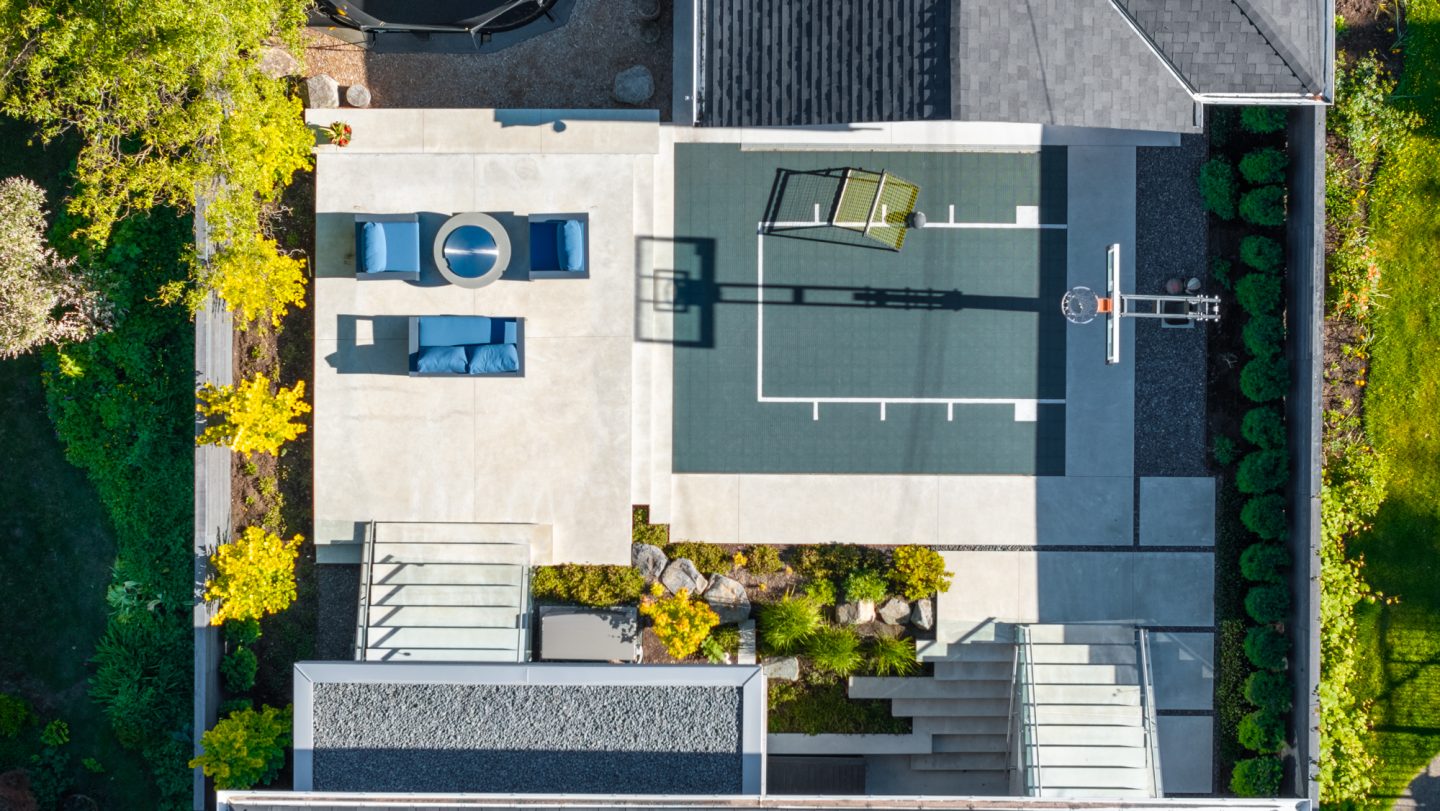Pros, Cons, Considerations, and Building Specifics
Adding a sport court to your residence isn’t just about installing a flat surface and painting some lines. It involves a myriad of building specifics to ensure your court is safe, durable, and enjoyable. Before breaking ground, consider the essentials to avoid common pitfalls. The right choices will shape the design, construction, and long-term maintenance of your sport court.
1. Site Preparation:
- Assess the available space to determine the location and size for your sport court. Consider factors such as setback requirements, existing landscaping, and potential for future expansions.
- Grade the site to ensure proper drainage and prevent water accumulation.
- Clear any obstacles such as trees, shrubs, rocks, or debris that may interfere with the construction process or pose risks during play.
2. Surface Material:
- Select the appropriate surface material based on factors such as budget, intended use, climate, and maintenance requirements.
- Common options include asphalt, concrete, modular tiles, synthetic turf, and acrylic surfaces, each offering unique benefits.
- Consider factors such as shock absorption, traction, ball bounce, and temperature regulation.
3. Construction Standards & Safety:
- Adhere to industry standards to ensure structural integrity, safety, and compliance with building codes and regulations.
- Utilize proper techniques and equipment for surface preparation, base installation, surfacing, line marking, and finishing to achieve professional results.
- Incorporate safety features such as shock-absorbing underlayment, perimeter fencing, padding, and non-slip surfaces to minimize the risk of injuries during play.
4. Accessories and Amenities:
- Enhance the functionality with a variety of accessories and amenities, such as lighting, fencing, seating areas, storage units, and spectator areas.
- Install durable and weather-resistant materials for accessories to withstand outdoor conditions and frequent use without deteriorating or requiring frequent replacement.
6. Maintenance Requirements:
- Implement practices such as cleaning, sweeping, power washing, and spot repairs to remove debris, dirt, mold, and stains that can accumulate on the surface.
8. Environmental Considerations:
- Implement eco-friendly practices and materials in the design and construction of your sport court to minimize environmental impact and promote sustainability.
- Choose permeable paving materials, native landscaping, and water-efficient irrigation systems to reduce water consumption and stormwater runoff.
By paying attention to building specifics, you can create a high-quality sport court that not only meets your recreational needs but also enhances the value, functionality, and sustainability of your property. A well-designed and expertly constructed sport court can provide endless hours of enjoyment.




 Contact Us
Contact Us